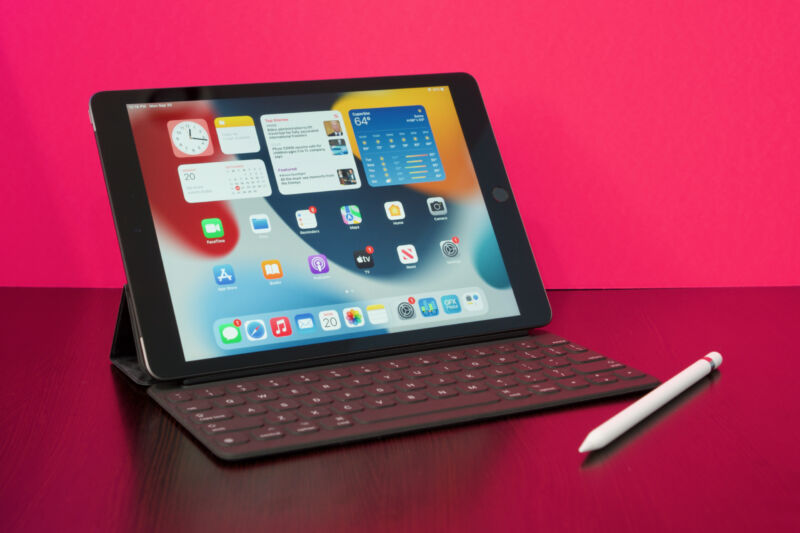
After leaving the iPad lineup untouched for the entirety of 2023, Apple is reportedly preparing to overhaul all of its tablets within the next few weeks, according to Bloomberg’s Mark Gurman. We should see major iPad Pro and iPad Air refreshes “around the end of March or in April,” says Gurman, along with a special build of iOS 17.4 that adds support for the new hardware.
We’ll talk about the specifics of these iPad rumors momentarily, but reading about them got me thinking about what it would take to make me consider an upgrade for either of the iPads currently rolling around my house—a third-generation iPad Air that is currently used mostly for watching Octonauts and assembling Super Mario Lego sets, and a fifth-generation M1 Air that I use mostly for reading and browsing.
At least for me, the answer isn’t “new hardware.” After a brief stint a few years ago using the iPad as a focused writing device, I’ve mostly relegated it to tablet-y content consumption, leaving behind the cottage industry of enthusiasts who keep trying to come up with workarounds to make the iPad into a Mac. To replace an iPad at this point, I would either need one of them to break or for Apple to dramatically change what the high-end iPads are capable of.
What’s coming this year?
By all accounts, both of these should be significant updates. The iPad Pro will reportedly see its first major redesign since Apple introduced the rounded, larger-screened iPad Pros back in 2018, along with an OLED display panel that will bring the iPad’s screen technology in line with Apple’s high-end iPhones. A thinner body and the new M3 chip are also fairly safe bets, and some rumors suggest that the tablets could support MagSafe wireless charging (not to be confused with the wired MagSafe 3 port on recent Macs). Apple may also increase the price of its Pro tablets, though sources can’t agree on how big those price hikes might be.
The iPad Air probably won’t see as big a design change, but the 6th-generation model will reportedly step up from the M1 to the M2, and Apple is said to be planning a first-ever 12.9-inch Air to complement the current 10.9-inch design. Like the 15-inch MacBook Air or the M2 Pro Mac mini, a 12.9-inch iPad Air could serve people who want a step up from Apple’s baseline iPads, but who find even more expensive iPad Pros difficult to justify.
Refreshes for the iPad mini and the low-end iPad(s) are also coming, but we’ll probably need to wait a bit longer; Gurman doesn’t mention them in his latest report, and rumors from late 2023 indicate that both models could see a refresh later in 2024. Both are long overdue for a bump; the $329 9th-generation iPad and the iPad mini were last updated in late 2021, and the oddball 10th-generation iPad is from the end of 2022.
A chance to course-correct
It’s looking like 2024 will be the biggest year the iPad has had in a while, though after a silent 2023, anything would look like a big year.
It’s also an opportunity for Apple to streamline the lineup—in particular, to finally get rid of the 9th-generation iPad along with its Lightning port and the first-generation Apple Pencil, making the 10th-gen iPad (or a slightly updated version of the same tablet) the new baseline. It’s also an opportunity to make sure that each iPad is clearly defined. The low-end iPad is the one you buy for basic browsing, messaging, gaming, and doodling; the Air is the step up for people who use the iPad as their primary computing device but don’t care about the Pro’s bells and whistles, and the Pro is the model for people with money to spend who just want the best hardware Apple can make.
The iPad lineup as it exists now reminds me of Apple’s MacBook lineup circa 2018, when the company sold the 12-inch MacBook, a non-Retina MacBook Air, a redesigned Retina MacBook Air, and an entry-level 13-inch MacBook Pro all within a couple hundred dollars of each other. Today’s MacBook lineup still has a bit of overlap (the identical-looking M2 Air and M3 Air are separated by just $100), but generally you can point to any given model and describe who it’s for. With a bit of pruning and some price adjustments, the iPad could be straightened out, too.
https://arstechnica.com/?p=2009539

